4 Basic Transmission Routes of COVID-19: Safe Air Travel Tips During the Pandemic
1Four basic routes of COVID-19 transmission
According to the World Health Organization (WHO), the Coronavirus does not transmit through the air, but primarily through four basic routes as follows:
First: Through contact with saliva, mucus droplets (sneezing) from coughing, sneezing or blowing the nose into the respiratory tract.
This form of transmission is very high, even if the person is healthy, when they come into contact with droplets (carrying the virus) while talking directly within a distance of less than 2 meters, or from the sneeze of the patient, they all have a very high risk of infection by Covid-19.

Second: Direct transmission when accidentally contacting with infected people, even shaking hands or contacting the stool of infected people (if not following proper measures to prevent the disease and washing hands with soap).

Third: Transmission when coming into contact with contaminated objects that have been contaminated by the sick person.
The person carrying the virus may inadvertently touch the droplets containing the virus on objects and surfaces when they cough, sneeze or touch objects such as tables, door handles, and stair handrails.
In that case, other people may become infected when they touch these contaminated objects or surfaces, and then touch their eyes, nose, or mouth before washing their hands.
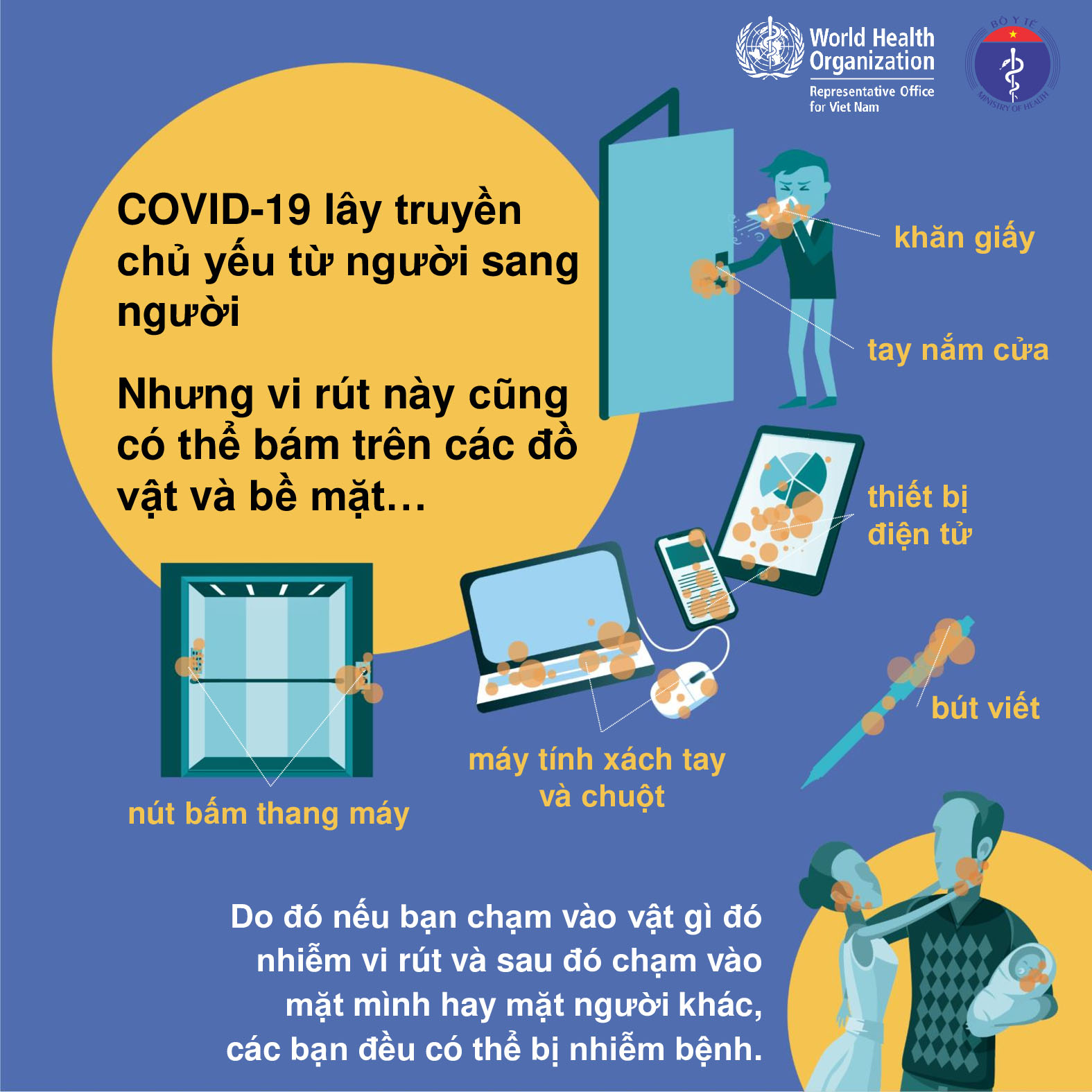
Fourth: Transmission through airborne transmission
In addition, COVID-19 can also be transmitted through airborne transmission – meaning aerosol, a method applied when treating respiratory-related diseases in healthcare facilities.
Specifically, this method will use aerosol mist to affect the respiratory system of the patient when lying on the bed. This means that if the Corona virus is present around, it can be mixed with aerosols and transmitted to those who inhale.
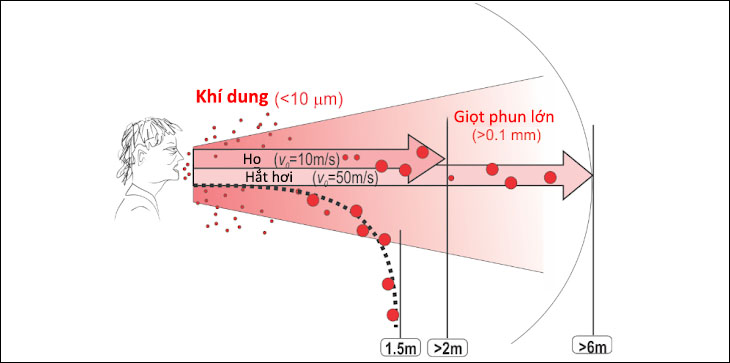
2The risk of COVID-19 transmission when traveling by plane
Traveling by plane during the COVID-19 pandemic has made many people worried about the current risk of infection. Is this issue as scary as we think?
According to Dr. Truong Huu Khanh – currently the Head of the Infectious Neurology Department at Children’s Hospital 1, Ho Chi Minh City, has shared that:
- Infection with Covid-19 on a plane is entirely possible, because the virus can survive on surfaces and in the air for a considerable time. The environment on the plane belongs to the enclosed space and everyone is very close together, so the cross-infection is entirely possible. Moreover, not every passenger is willing to sit still throughout the flight, especially on long-haul flights, because they may need to move out to use the restroom, eat, etc.
- However, this does not mean that every passenger traveling by plane becomes worried and anxious unreasonably. Because there have been cases where flight attendants who work and contact with many passengers (including passengers infected with the virus) but they are still safe and not infected with the disease thanks to their knowledge of implementing proper prevention measures, not to mention depending on the immune system of each individual.

In addition, according to the sharing of Mr. Tran Dac Phu – currently an Advisor to the Vietnam Emergency Response Center for public health incidents, has also analyzed that:
- Transmission on a plane seems to be less limited than transmission in a confined space or in the case of close contact outdoors. Therefore, people should not be overly anxious and worried when traveling by plane. Because there are cases where flight attendants work and contact with many passengers (including passengers infected with the virus) but they are still safe and not infected with the disease because they know how to implement proper prevention measures, as well as depending on the resistance of each person.
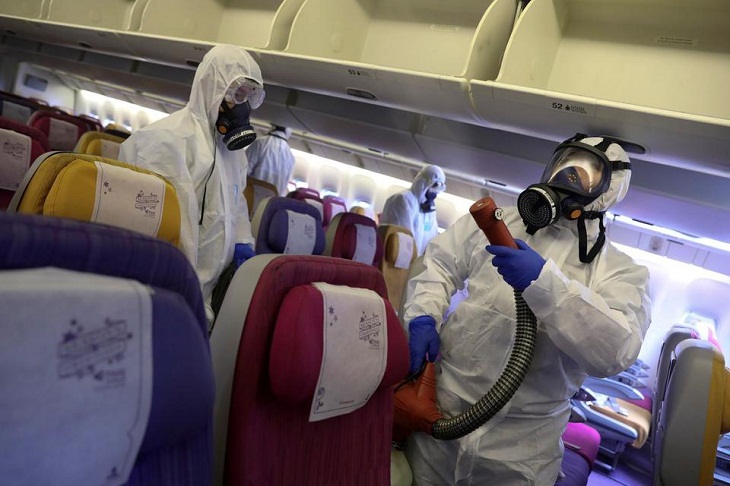
3High-risk positions on the plane
So how can we minimize the risk of COVID-19 infection when traveling by plane?
According to the World Health Organization (WHO), the likelihood of infection with Covid-19 when traveling by plane is entirely possible if there are no measures to avoid infection, especially for those sitting within 2 rows around the infected person.
Especially on long-haul flights, passengers may not stay in one place, as they may need to move out to use the restroom, eat, etc., which inadvertently increases the distance for the virus to spread to more than 2 rows.
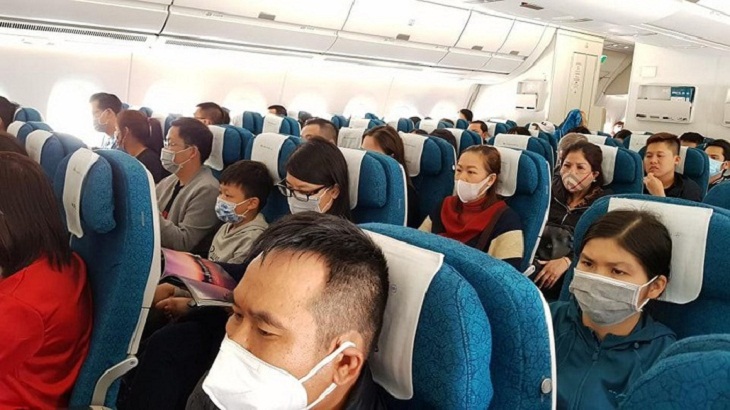
We cannot deny the high likelihood of virus transmission, but it also does not mean that any passenger traveling on the same flight as the infected person (carrying the virus) will be at risk of infection.
Because according to the research results of the Fly Healthy Research team, they believe that: the window seat is considered the safest place and minimizes the risk of infection because:
- The window seat has less interaction with many passengers passing by, so the risk of infection is low. Specifically, according to average statistical data, a passenger sitting in a window seat will only interact with other members in the cabin or other passengers about 12 times.
- In contrast, a passenger sitting in a middle seat or an aisle seat will come into contact with others more than 60 times, meaning they have a high risk of infection.
In addition, if that flight has a person carrying the virus, the probability of infection for passengers sitting within 2 rows around the infected person is only less than 1%. However, in the seat 1 row next to that, the risk of infection can reach up to 80%.
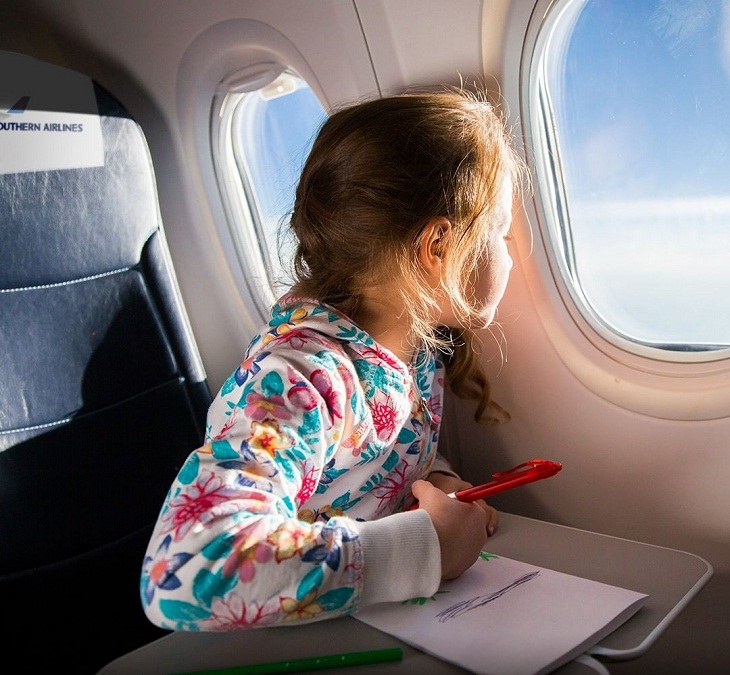
In addition, the crew members also have a high risk of infection because they have to come into contact with many passengers in different locations and often stay longer on the plane. Specifically, if 1 crew member is infected, they can possibly infect at least 4-6 passengers on the flight.
4Safety tips when traveling by plane during the pandemic
The new strain of the Corona virus spreads rapidly, so unnecessary travel should be limited during this time. However, if you cannot change your travel plans, you can apply some safety tips after traveling by plane:
Always wear a mask
Previously, doctors only advised to wear a mask in case of illness or contact with patients, or when entering areas with epidemics.
However, when traveling by plane, you have to come into close contact with many people, so wearing a medical mask is the safest, because the Corona virus can incubate on the infected person’s body for 2-14 days.

Regularly wash hands with soap, antibacterial water
Wearing a mask also limits the risk of virus transmission, but the most important thing is that you need to wash your hands frequently with soap (or hand sanitizer).
Doing so will inhibit the virus’s activity and destroy it. Also, avoid touching facial areas like the eyes, nose, and mouth with your hands.

Carry a disinfecting wipe
In addition to using hand sanitizer, you can consider carrying a convenient disinfecting wipe.
Use disinfecting wipes to wipe your hands or wipe surfaces of your seat area (such as seat covers, tray tables, seat bags, headrests, entertainment screens, etc.) to avoid infection.

Choose spacious seating
Avoiding people who cough or show signs of respiratory illness is very difficult to implement when traveling on a plane. However, if possible, you should prioritize choosing seats that are far from other passengers on the flight:
- Seats near the aisle, which frequently come into contact with other passengers (may move to use the restroom), flight attendants, and even the infected person carrying the virus.
- Seats by the window, which help you create distance from others on the flight as well as minimize the spread of the virus.

Maintain distance with people around
If the flight is not too crowded, you can create a safe distance from those around you to avoid infection.
Usually, the seating plan of the flight is close and you cannot determine how many passengers will be on the flight? Therefore, try to keep a distance from those around you as far as possible when boarding and sitting on the plane.
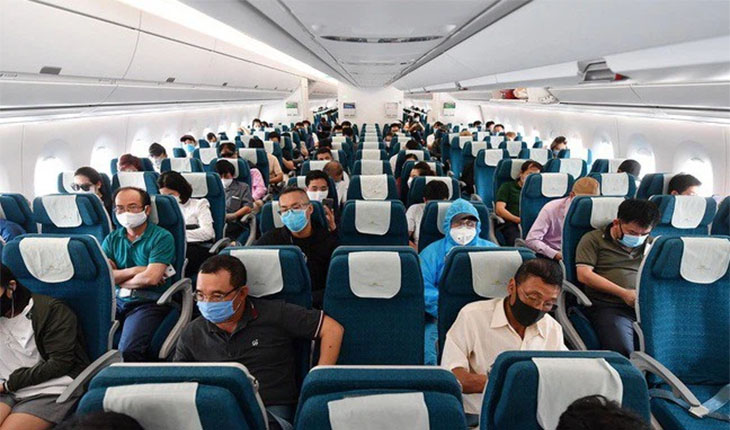
Limit the use of restrooms
The restroom is also a place that is easily infected by the virus when traveling by plane, from door handles to flush buttons are touched by many people.
In case you need to use the restroom, be cautious – wash your hands and use antibacterial water before returning to your seat.
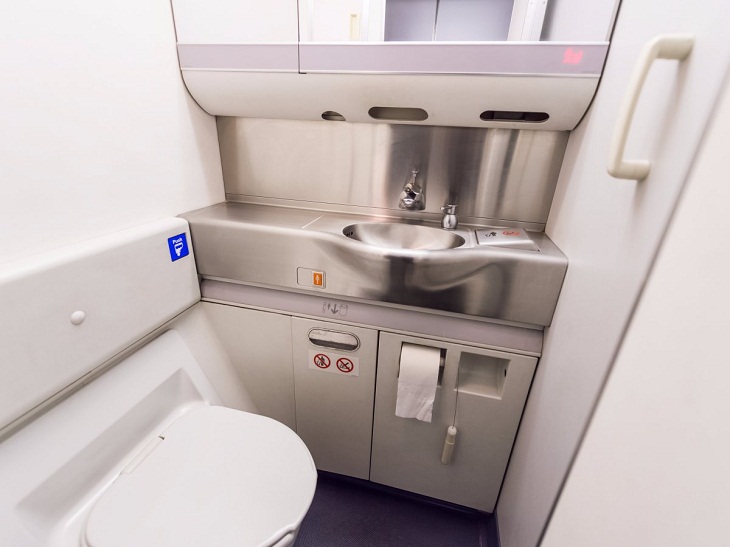
Turn on the aircraft air filter
Most planes are equipped with air filters that help remove odors, bacteria and provide the coolest air. After filtering, the air is recirculated in the plane’s compartment and thanks to the fan placed on the top of each seat, it spreads to the sitting passengers.
Therefore, you should adjust the intensity and direction of this fan (if possible).
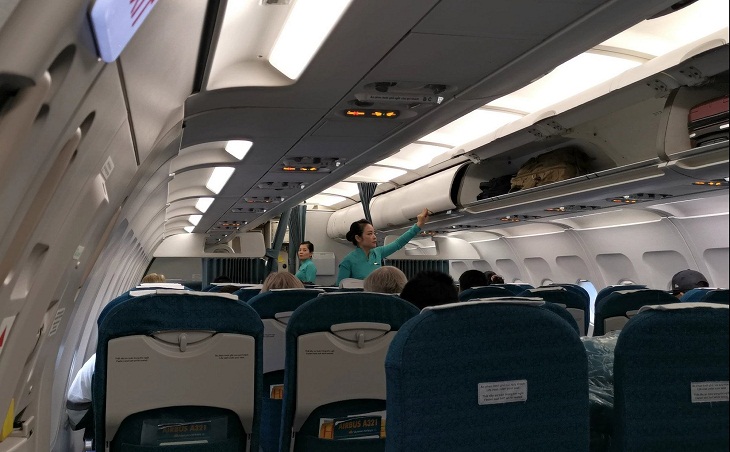
Drink plenty of water
Drinking plenty of water is good for your health, especially for boosting your immune system and avoiding dry mucous membranes. Avoid quenching your thirst with alcoholic beverages or drinks containing caffeine like coffee, tea, etc.

Install the Bluezone tracking app
The Ministry of Health and the Ministry of Information and Communications recommend that people install the application to detect close contacts, from which there will be effective tracking measures.
Specifically, when a new case of Covid-19 is detected, the contact history of the patient will be sent to smartphones that have installed the application for cross-referencing. If there are matches, users will receive a warning about the risk of infection.

Hopefully, the above information will help you understand more about the basic routes of transmission of the Corona virus as well as some tips to avoid when traveling by plane during this pandemic. Protect your health and only travel when necessary!
The post https://meo.tips/health-and-life/4-basic-transmission-routes-of-covid-19-safe-air-travel-tips-during-the-pandemic/ appeared first on Meo.tips.
View more from Meo.tips:
7 Quick and Secure Strategies to Increase Humidity in an Air-Conditioned Room15 Super Cute Long Hairstyles for a Cool Summer Look
Use Tea Bags to Get Rid of Odors and Grease in an Oil-Free Fryer
Tips for Making the Perfect Hamburger
Troubleshooting a Malfunctioning Washing Machine: Identifying the Source of the Problem and Resolving It
Greetings for Everyone in the Lunar Month of July
10 Must-Visit Homestay Destinations in Da Lat for a Memorable Tet 2021
Essential Technology for Travel: 5 Gadgets You Need
4 Easy and Highly Effective Ways for Moms to Regain Lost Breast Milk
Discover How to Spot Hidden Cameras in Hotels with Tips from a Famous Hacker
“Stylish Wooden Box Home Wall Decorations”
Unveiling the Meaning Behind New Year’s Harvest: Tips for Having Luck in 2021
5 Effective Home Massage Techniques to Reduce Puffiness
Revitalize Dull Skin for Visible Results
✔ 4 Easy and Effective Techniques for Removing Glue from Clothes
How to Backup and Restore Data on Your iPhone (iOS Tips)
10 Unexpected Negative Effects of Social Media
How To Fix The Howling of a Karaoke Microphone
2 Easy Ways to Eliminate Odors from Clothes Dryers
Tips for Dealing with a Red Flame on a Gas Stove
Nhận xét
Đăng nhận xét